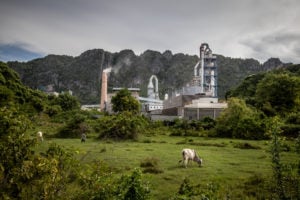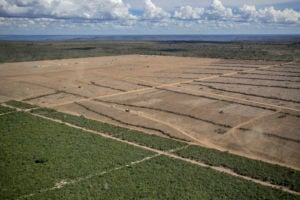Investors, financial regulators and activists alike are turning their attention to the looming ecological crisis of biodiversity loss. While climate litigation continues apace, creating climate-related liability risks for banks and insurers across the globe, biodiversity looks to be the next frontier in nature-related litigation and therefore nature-related liability risks for financial institutions.
There is a potential risk to financial institutions being sued for financing the destruction of nature. But the near-term priority should be to heed the call of financial supervisors to assess, mitigate and disclose liability risks related to biodiversity as part of the broader assessment of biodiversity-related financial risks.
Such liability risks are broader than direct litigation risks and, like climate litigation, extend beyond environmental claims across the suite of commercial, human rights, statutory and tort law claims. We explore these in this article, based on the findings of our recent report for the Commonwealth Climate and Law Initiative.
Since the Bank of England Prudential Regulation Authority (PRA) published its landmark 2015 report on the potential impacts of climate change on the insurance sector, there has been exponential growth in our understanding of climate-related financial risks, particularly the physical impacts (whether acute or gradual onset impacts on the natural and built environment) and economic transition risks (harms to an enterprise caused by shifts in government policy/regulation, technological innovation or shifting preferences of shareholders, financiers, insurers, the community and other stakeholders in the low-carbon transition) described in that report. The 2017 recommendations of the Task Force on Climate-related Financial Disclosures (TCFD) have since emerged as the leading framework to assess, manage and disclose climate risks in line with investor expectations and regulatory guidance.
Less well understood is the third category of climate-related financial risks described by the PRA: climate-related liability risks. Liability risks can arise for both the enterprises responsible for the greenhouse gas emissions that contribute to climate change, and across a broad suite of government, corporate and individual actors who fail to manage the physical or economic transition risks associated with the changing climate.
Over 1,500 climate change cases have been brought in at least 38 countries by a wide range of claimants, including states, cities, investors, NGOs and even children. In this “climate litigation”, parties who suffer or apprehend loss or injury associated with climate change impacts or the transition seek to employ legal strategies for compensation, to hold others accountable for the loss, or to drive preventative climate action. This climate litigation, as well as regulatory enforcement action beyond the courts, creates liability risks that flow through the financial system.
Along with climate change, the World Economic Forum’s 2020 Global Risks Report ranked biodiversity loss as one of the five top risks to the global economy of the next decade. The report tracks a growing concern among central banks, regulators and financial market participants about the financial risks presented by loss of biodiversity and ecosystem services.
In May 2020, the Network for Greening the Financial System (NGFS) published guidance for central banks and supervisors on how to integrate environmental risks – including risks from biodiversity loss – into prudential supervision. The report by the coalition of central banks and supervisors, including the People’s Bank of China, follows the TCFD characterisation of climate-related risks: physical and transition risks, with liability risks as a subset of these. It called for greater understanding of the transmission and materiality of these environmental risks:
Supervisors are recommended to determine how climate-related and environmental risks transmit to the economies and financial sectors in their jurisdictions and identify how these risks are likely to be material for the supervised entities. (NGFS Recommendation 1)
With biodiversity loss, just like climate change, there are financial risks, for example related to dependence on vulnerable or disappearing biodiversity, similar to the physical risk from more frequent extreme weather. And there is a transition risk for activities that cause biodiversity loss, just as there is for carbon emitters, for example from new environmental regulation, or changing consumer attitudes.
A framework for assessing liability risks
In our recent report for the Commonwealth Climate and Law Initiative, “The emergence of foreseeable biodiversity-related liability risks for financial institutions: A gathering storm?”, we propose a framework to assist firms and regulators to assess these liability risks. In the case of claims for causing biodiversity losses, and resulting human, ecological and financial impacts, we can expect these to target the five key drivers of biodiversity loss as set out by IPBES, the UN biodiversity panel: changes in land and water use, over-exploitation of organisms, climate change, pollution and invasive alien species.
Strategic claims are expected as claimants seek to stop these drivers of biodiversity loss. Our framework sets out three high-level categories and 10 sub-categories of biodiversity-related liability risks.
Framework of biodiversity-related liability risks
Two of these categories involve direct liability to financiers: categories 1E and 3C. These are not just theoretical risks. For example, in June 2020 the NGO Inclusive Development International brought a claim against the International Finance Corporation (IFC), alleging that its investment in a proposed limestone and cement factory in the Kendeng mountains of Central Java, Indonesia, breaches the due diligence requirements of its environmental and social performance policy. The IFC holds a significant equity stake in Raiffeisen Bank International, the Austrian-based bank that provides general corporate lending to the project proponent Heidelberg Cement. The NGO lodged the complaint on behalf of affected communities who allege the project will threaten species and endemic wildlife and flora, and contribute to the destruction of delicate ecosystem and habitat that the local communities depend on for their subsistence and livelihoods.
Real economy actors, which produce goods and services, face risks of becoming corporate defendants in the other categories. For example, French supermarket Casino Group has been threatened with legal action by a group of Indigenous organisations and NGOs for selling beef in its stores that is linked to deforestation in the Amazon.
There are three avenues by which such strategic biodiversity claims may impact on the financial sector. The first is direct impacts as defendants in litigation, such as the IFC claim discussed above. The second is indirect impacts of biodiversity litigation involving defendants in the real economy (for example, if a claim is lodged against Casino Group) through credit, investment and underwriting risks. Finally, there could be third-order indirect impacts through systemic risks if biodiversity-related liability risks materialise at a sufficient magnitude across sectors or geographies. The relationship between these impacts is described in the figure below.
How biodiversity-related legal claims may impact financial institutions
Financial institutions and their supervisors will need to grapple with the first and second order exposures by which liability acts as a mechanism for the transfer of physical and economic transition risk across markets. They will also have to deal with third order indirect impacts through systemic risks, for example, building such risks into the stress-testing scenarios and capital adequacy requirements for banks, insurers and pension funds.
In assessing these liability risks, actors will need to consider the legal and market variables unique to the jurisdiction. These could be used as high-level proxies for the jurisdictional dynamics of liability risk, which, taken together, could be indicative of a higher degree of exposure. For example, a bank with a large commercial loan book: (a) in sectors that have the greatest biodiversity impacts or dependencies on ecosystem services; and (b) in jurisdictions with bountiful natural assets but minimal biodiversity-related legislation or enforcement, would likely be exposed to larger biodiversity-related liability risks.
While there are some similarities to climate litigation, there are key differences which have implications for the materiality of biodiversity-related liability risk. Claims relating to physical, localised biodiversity impacts may in fact face lower procedural and evidentiary hurdles than those seeking to attribute liability for climate change-related physical impacts, which are hampered by the spatial and temporal disconnect between the emissions and their harm.
Biodiversity-related liability and litigation are increasingly flagged as relevant issues, both in their own right, and as mechanisms for the transmission of discrete physical and market-based risks across economic systems. Just like climate-related liability risks, understanding the range of potential biodiversity-related liability risks will enhance the position of financial institutions to identify, price and mitigate these direct and indirect impacts, and for financial regulators to integrate these risks into their supervisory activities under their financial stability mandates.







